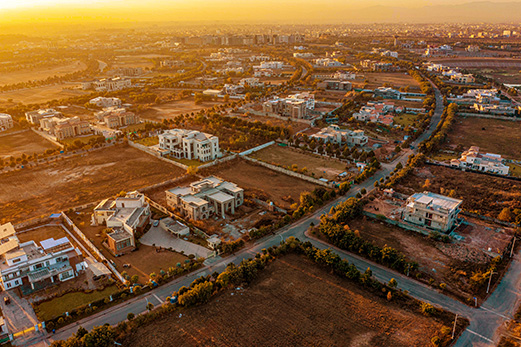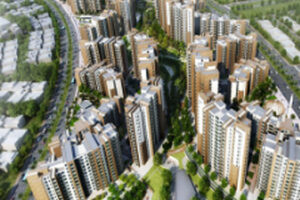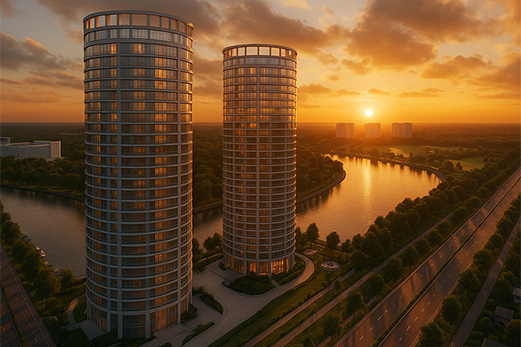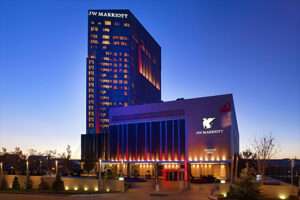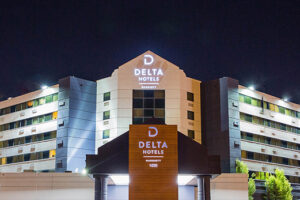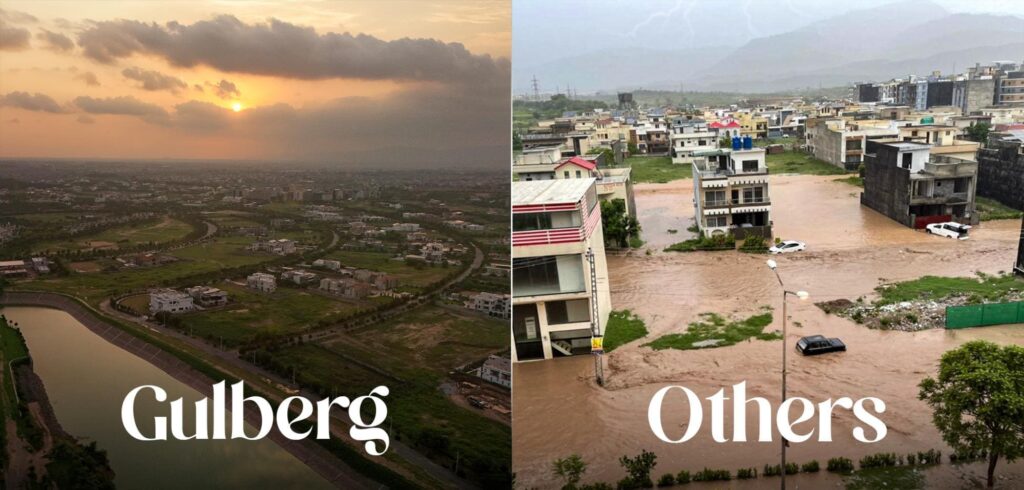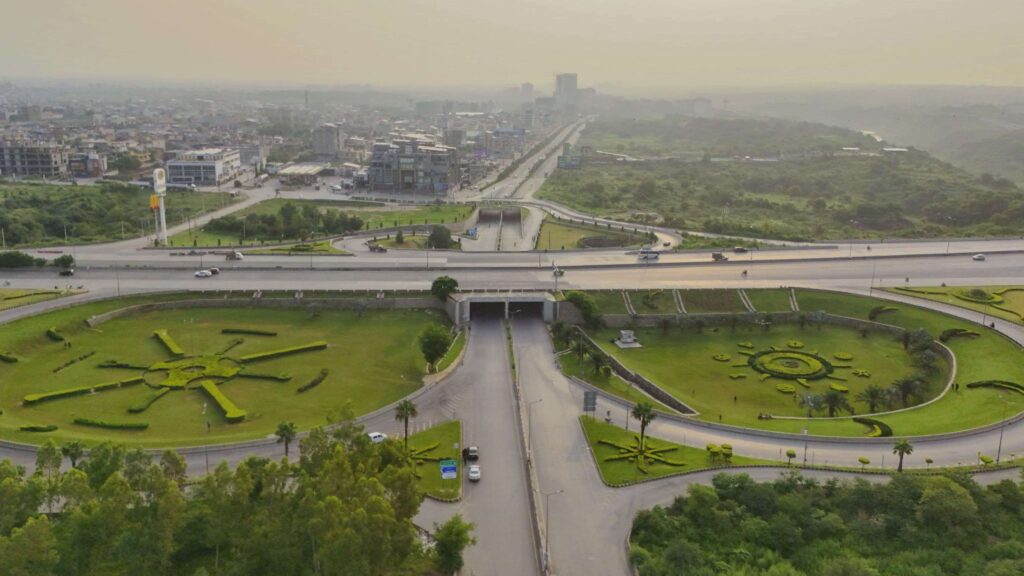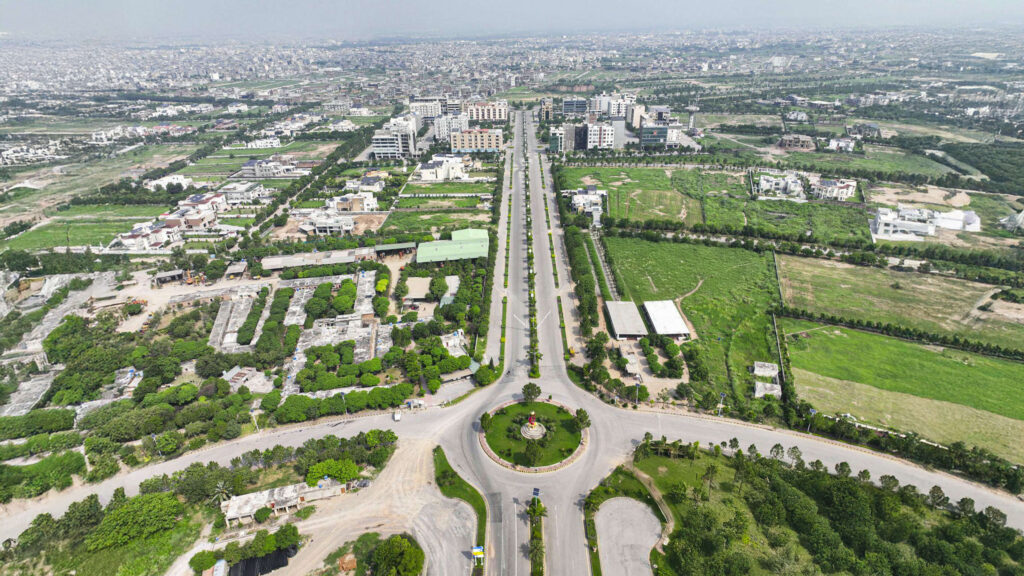Islamabad has been hit by flooding several times in the last few years. Remember the 2021 cloudburst that left major roads like E-11 and sectors in F-10 completely submerged? That wasn’t just heavy rain; it was poor planning. And in 2025, history repeated itself with record-breaking rainfall, 237 mm in just 18 hours, that flooded low-lying areas again and caused Nullah Lai to rise to 13 feet at Katarian Bridge. These disasters were not just natural; they were made worse by poor urban planning and blocked waterways.
Gulberg, on the other hand, is taking a different route. Instead of repeating the mistakes of sectors like E-11 or unregulated schemes, Gulberg Islamabad development is preserving natural spillways. This is what sustainable urban planning in Gulberg looks like.
Today, let’s talk about why these natural spillways matter, how Gulberg is using them smartly, and why this makes life safer for its residents.
The Problem: Allotting Plots on Natural Drains
Allotting plots on drains may look profitable, but every monsoon exposes the damage. In 2021, CDA data revealed that blocked or encroached natural drains made over 20% of Islamabad’s low-lying areas vulnerable. Residents of sectors like E-11 filed petitions after floods filled their basements, destroyed their cars, and claimed lives. In 2025, intense rains again flooded several unplanned housing schemes, proving that authorities ignored the lessons from 2021.
Unapproved schemes in Bhara Kahu, Tarnol, and parts of Rawalpindi are often built right across natural channels. The result is always the same: waterlogging, overflowing drainage channels, and chaos on roads.
Such decisions show short-sightedness. They make taxpayers and residents bear the cost of emergency response, drainage system repairs, and health risks. People have even criticised DHA and Bahria Town when record rainfalls overwhelmed their drainage systems.
Urban planning must mean protection. Blocking drains just for extra plots is the opposite. It puts profit over people and leaves societies vulnerable. This is where risk-free land allotments in Gulberg create a safer alternative.
What Are Natural Spillways and Why Do They Matter?
Natural spillways are the earth’s own drainage system. They are the pathways where rainwater naturally flows during downpours. In Islamabad, these channels are part of the Soan River basin and its many tributaries. When left open, they carry away excess water, protecting homes and streets.
Water has no route if they are blocked, though. This causes the flash floods seen in areas like I-8, H-13, and even portions of G-13, where buildings disregarded drainage. Millions of dollars the city spent clearing trash and mending roads in 2021 and 2025 following extreme rain.
That is why protecting these channels is key to urban sustainability in Islamabad. They are cheaper than building artificial drains from scratch, they work naturally, and they keep ecological balance intact.
Natural spillways in Gulberg are being preserved and strengthened — because they are the first line of defence against urban flooding.
Gulberg’s Approach to Sustainable Urban Planning
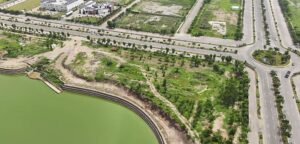
Gulberg is proving that development and nature can work together. Instead of covering water channels or converting them into residential plots, Gulberg’s master plan keeps these spillways open and enhances them. This is eco friendly urban planning in Pakistan done right.
Gulberg Islamabad development has aligned roads, green belts, and drainage systems with these natural water flows. This means that during a cloudburst, water moves where it should — away from homes, towards natural exits. This makes water management in urban planning simpler and far more effective.
The distinction becomes evident when comparing it with regions such as E-11 or unprepared communities. While other areas battled for days throughout the 2021 and 2025 floods, Gulberg faced little to no serious flooding.
For residents, this approach means lower risk, safer investments, and more confidence in their property’s future. It also controls infrastructure costs — no expensive emergency drainage projects, no repeat road damage every monsoon.
Globally, sustainable real estate projects in Islamabad are compared to smart cities abroad. Gulberg is already setting that benchmark locally. Choosing natural spillways over risky allotments shows the future of city planning in Pakistan.
Benefits of This Approach for Residents
Living in a society that respects natural drainage means peace of mind. Gulberg residents don’t have to fear waking up to flooded streets or submerged basements. The flood management in real estate here is planned, not reactive.
There are financial benefits too. Every time roads or drainage collapse elsewhere, residents bear repair costs through higher fees or taxes. In Gulberg, these risks are minimised thanks to proper sustainable urban planning.
Open spillways and green belts also provide better living conditions. They offer society a cleaner, greener image; lower temperatures; and better air quality. For families searching for comfort and security, Gulberg is thus seen as one of the safe housing societies in Islamabad.
The result is higher property values and a thriving community. People trust that their investment will withstand extreme weather, something many older sectors cannot guarantee.
Lessons for Other Developers and City Planners
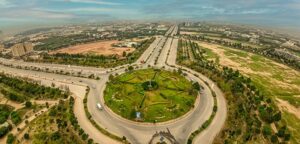
The takeaway is simple: respect nature. The sustainable urban planning definition is about balance. Developers must stop blocking drains and start working with natural flows.
Islamabad’s future depends on decisions made now. If more projects follow Gulberg Islamabad development’s model, the city can avoid tragedies like the 2021 and 2025 floods. This is not just about better roads; it’s about safer homes, reduced costs, and climate resilience.
Even major societies like DHA and Bahria have started improving drainage after repeated complaints — proof that the industry is waking up. But Gulberg is already ahead, setting an example for sustainable real estate projects in Islamabad.
Developers should prioritise people over profit, ensuring every housing scheme is built with long-term safety in mind.
Conclusion
Gulberg has chosen the safer, smarter way. Preserving natural spillways has made sustainable urban planning in Gulberg a reality. This approach keeps residents safe, protects property, and reduces flooding risks.
Other developers can learn from this. Risky allotments lead to risky living. Sustainable planning leads to lasting value. For anyone looking for safe housing societies in Islamabad, Gulberg proves that development doesn’t have to ignore nature. It can work with it — that’s the way forward for every growing city.

